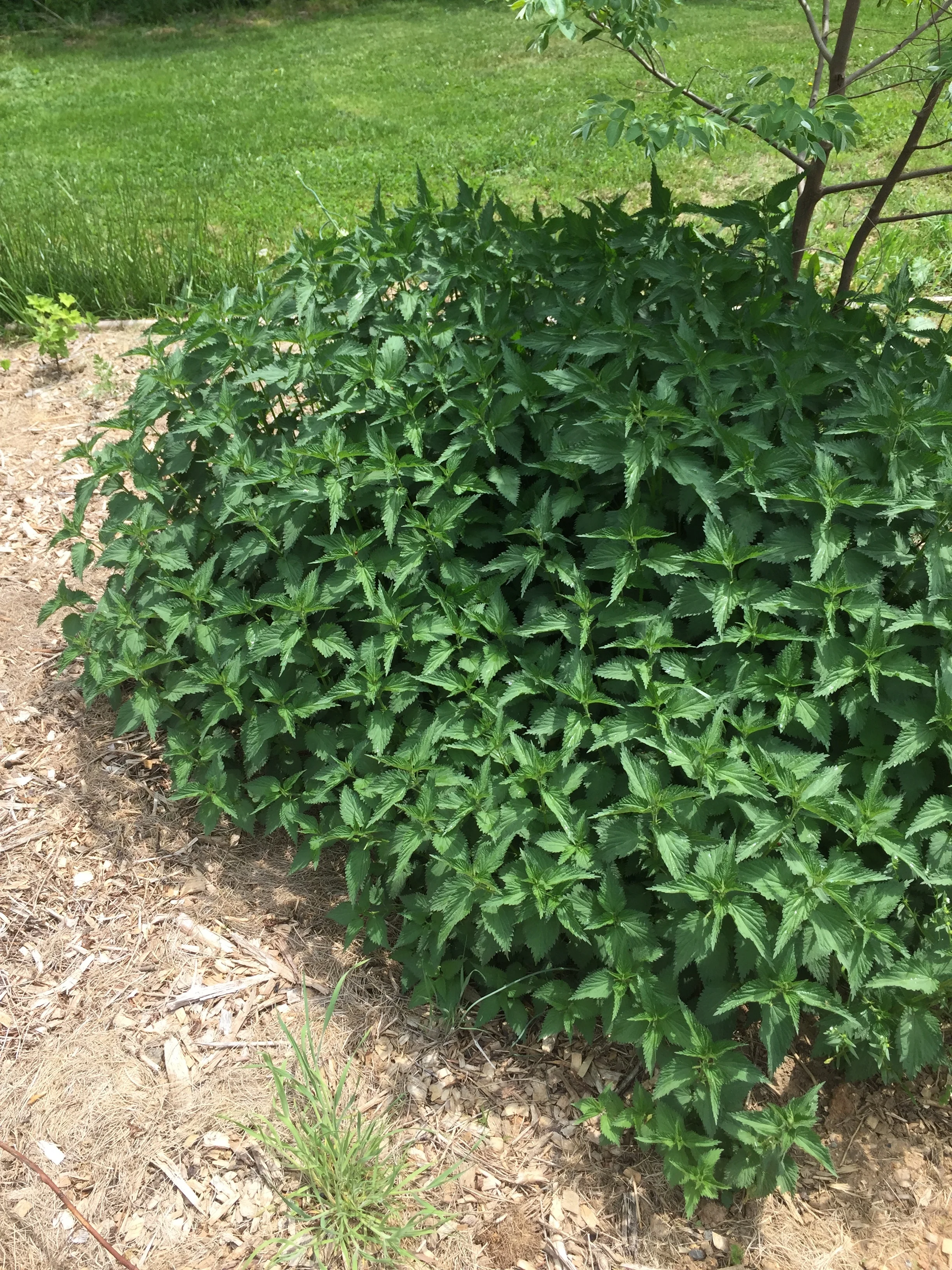Stinging Nettle




Stinging Nettle
Urtica dioica
Plant for homespun clothing, for the magical nutrition, for the riparian tea, and for eating contests as conflict transformation!
Each order is a bundle of multiple rootlets.
Hardy from Zones 3-10. 2-4 feet tall (but sometimes up to 7) and spreads.
Our patches of Stinging Nettle keep growing! Partly because they spread themselves through rhizomes and partly because we keep planting more because we realize we want more of this perennial plant and all their gifts.
As the name suggests, Stinging Nettle is most famous for their ability to leave a lingering tingle. The wiry stems and soft forest-green leaves have small bristly hairs that inject histamine like tiny hypodermic needles. Numerous European sayings about precarious situations or getting in trouble refer to Nettle. In England, someone is “nettled” when they’re annoyed. Makes good sense if you’ve ever accidentally brushed against them, but we don’t think Nettle is all that troublesome when treated well. They don’t sting so much if you firmly grab the stems, which flattens the needles. And we’re guessing the plant isn’t as easily irritated as we are.
Nettle grows natively to Europe and parts of Asia and North Africa. They’ve long been known as a remarkable source of food, medicine, and fiber. Nettle tastes a tad like spinach and is packed with Vitamins A and C and minerals like iron, potassium, manganese, and calcium. The leaves also contain a significant percentage of carbohydrates and Omega-3 fatty acids, with even more in the seeds. They have up to 25% protein when dried, which is very high for a leafy green! Ruminants don’t care much for fresh Nettle, but cows will chomp down on the dry stuff like it’s alfalfa hay. We dry loads of Nettle for ourselves each Summer, hanging them from rafters in shade to use later as tea and additions to soups, stir fries, polenta, pesto, and almost everything we roast. Cooking or soaking prevents stinging, but we still get a slight tingly sensation from dried leaves. Some Gouda recipes call for Nettle and Cornish Yarg, a cheese from cow’s milk, is made with Nettle wrapping as an edible rind. Albanian and Greek recipes simmer tender leaves with herbs and rice to mix them into dough. Nettle beer can be found in British countryside pubs. In fact, the United Kingdom has a World Nettle Eating Championship to see who can eat the largest amount of raw Nettle. The contest originated when two farming neighbors argued about who had the most intrusive patch of Nettle. They’re mediation resolved the dispute and helped limit the Nettle population!
Nettle shows up in a 10th century text called the Nine Herbs Charm, an Old English herbal spell for treating poison and infection. Apparently, chanting the charm aloud is pretty soothing in its own right. Nettle is medicine for urinary tract infections, for digestion, kidney and cardiovascular health, as a galactagogue (stimulating lactation) and to ease painful muscles and joints by putting fresh leaves on the skin, which is called urtication. The hairy spines that sting can also soothe existing discomfort by reducing inflammatory compounds and mediating the body’s pain signals. Some Indigenous healers in Ecuador now use raw Stinging Nettle leaves on bodies to improve circulation to treat fatigue. Research from Howard University’s Drug Information Services suggests that Nettle may also help lower blood sugar.
If all that’s not enough, you can make clothes with this plant! More specifically, you can make clothes with the bast, a fiber from the phloem, or the inside tissue that moves photosynthetic sugars down to the roots. The fiber yield is comparable to flax and makes coarse linens. Once you’re finished, you can dye the fabric yellow from the roots!
Nettle is a good sign of fertile soil. They love moist woodland understories, wetlands and riparian buffers, and meadows with loose soils full of phosphorus and nitrogen. We use their richness in compost tea brews to feed our trees, shrubs, and other herbs. They’re a hospitable plant for beneficial garden insects, serving as the exclusive larval food for several butterflies and some moths. Nettle is very good medicine for us and the land!
We propagate our Stinging Nettle from divisions: splitting off rooted sections from the main crown. One order includes a bundle of multiple fibrous vigorous rootlets, enough to get a small patch going!